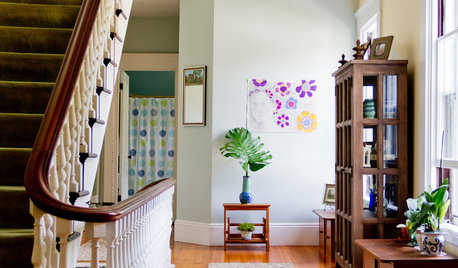Removing Soil?
Lynn-in-TX-Z8b- Austin Area/Hill Country
10 years ago
Related Stories

GARDENING GUIDESThe Poop Scoop: Enrich Your Soil With Good Old Manure
Get over the ick factor already — this natural super-ingredient for soil has so many benefits, you'll wonder why you ever went chemical
Full Story
GARDENING GUIDESGet the Dirt on Your Garden’s Soil
Understand how your soil supports your plants so you can ensure your garden’s success
Full Story
GARDENING GUIDESHow to Pick a Mulch — and Why Your Soil Wants It
There's more to topdressing than shredded wood. Learn about mulch types, costs and design considerations here
Full Story
LANDSCAPE DESIGNHow to Shape a Rain Garden and Create the Right Soil for It
Learn how to grade, lay out and amend the soil in your rain garden to support your plants
Full Story
GARDENING GUIDESHow to Stop Worrying and Start Loving Clay Soil
Clay has many more benefits than you might imagine
Full Story
GARDENING GUIDESGardening Solutions for Dry, Sandy Soils
Has your desert or beachy site withered your gardening creativity? Try these ideas for a beautiful, easy-care landscape
Full Story
GARDENING GUIDESHouzz TV: Make a Worm Bin for Rich Soil and Happy Plants
A worm-powered compost bin that can fit under a sink turns food scraps into a powerful amendment for your garden. Here’s how to make one
Full Story
GARDENING GUIDES10 Solutions for Soggy Soil
If a too-wet garden is raining on your parade, try these water-loving plants and other ideas for handling all of that H2O
Full Story
GARDENING GUIDESNew Ways to Think About All That Mulch in the Garden
Before you go making a mountain out of a mulch hill, learn the facts about what your plants and soil really want
Full Story
HEALTHY HOMEGet the Lead Out: Lead Safety at Home
Keep your family safe by properly testing for and dealing with lead in old painted surfaces, water and soil
Full Story










subk3
Evenie
michaelg
dublinbay z6 (KS)
jaspermplants
Kippy
michaelg
Lynn-in-TX-Z8b- Austin Area/Hill CountryOriginal Author
Kippy
Lynn-in-TX-Z8b- Austin Area/Hill CountryOriginal Author
rosefolly
michaelg
Lynn-in-TX-Z8b- Austin Area/Hill CountryOriginal Author
Lynn-in-TX-Z8b- Austin Area/Hill CountryOriginal Author
Kippy
michaelg
Lynn-in-TX-Z8b- Austin Area/Hill CountryOriginal Author
hoovb zone 9 sunset 23
Lynn-in-TX-Z8b- Austin Area/Hill CountryOriginal Author
michaelg
nikthegreek